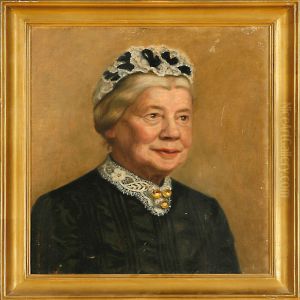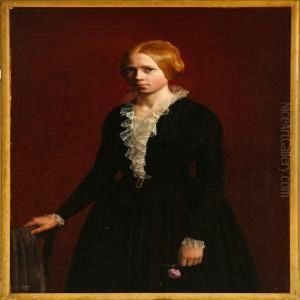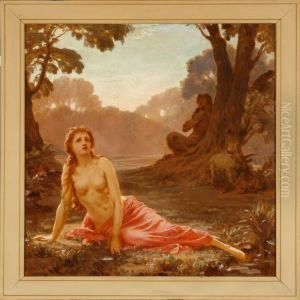Henrik Olrik Paintings
Henrik Olrik was a prominent Danish painter, sculptor, and illustrator, whose work left a significant mark on the 19th-century Danish art scene. Born on May 24, 1830, in Copenhagen, Denmark, Olrik was initially inclined towards engineering but soon shifted his focus towards the arts, a decision that would shape his entire career. He studied at the Royal Danish Academy of Fine Arts in Copenhagen, where he honed his skills and developed a distinct style that would later earn him accolades and recognition in Danish and Scandinavian art circles. Olrik's oeuvre is diverse, encompassing portraits, religious themes, and historical paintings. He was deeply influenced by the Romantic movement, which was evident in his preference for dramatic themes and his ability to infuse his subjects with emotion and depth. His portraits, in particular, are renowned for their meticulous detail and psychological insight, offering a glimpse into the character and soul of his subjects. Olrik also engaged with historical and mythological themes, creating works that were both evocative and rich in narrative. Throughout his career, Olrik received several commissions for public monuments and sculptures, showcasing his versatility as an artist. His contributions to Danish art were recognized with numerous awards, and he became a member of the Royal Academy, further solidifying his status as one of the leading figures in Danish art. Henrik Olrik's legacy is preserved in the collections of major museums across Denmark, including the National Gallery of Denmark, where his works continue to be admired by art lovers and scholars alike. Henrik Olrik passed away on February 20, 1890, leaving behind a body of work that continues to be celebrated for its artistic merit and cultural significance. His impact on Danish art is enduring, with his paintings and sculptures serving as a testament to his skill, creativity, and profound understanding of human nature and history.












